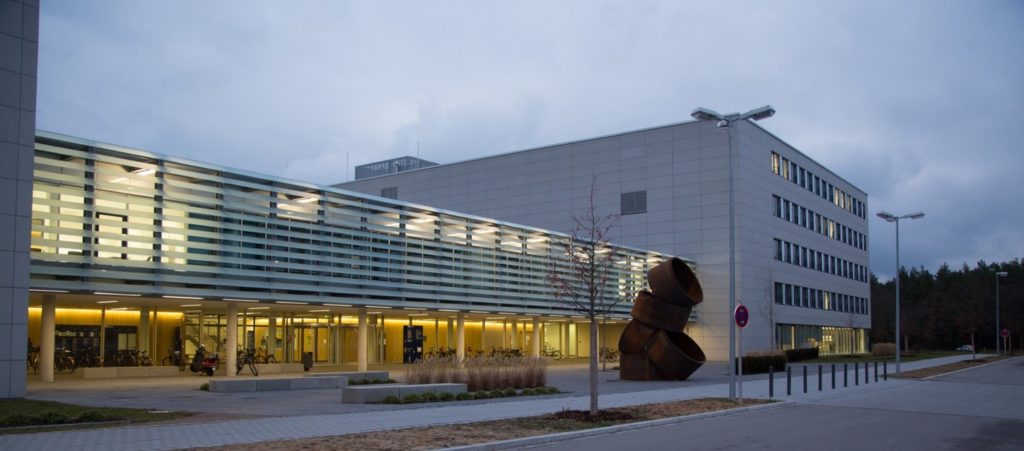Venue

City of Erlangen
Erlangen is located in Middle Franconia in Bavaria, Germany, north-west of Nuremberg at the confluence of the river Regnitz and its large tributary, the Schwabach. It has more than 100,000 inhabitants and is dominated by the University of Erlangen-Nürnberg and the numerous branch offices of Siemens AG, as well as a large research Institute of the Fraunhofer Society and the Max Planck Institute for the Science of Light. An event that left its mark on the city was the settlement of Huguenots after the revocation of the Edict of Nantes in 1685.
Find more information, e.g., on the tourist website of the city of Erlangen.
Friedrich-Alexander-University Erlangen-Nürnberg (FAU)
Founded in 1743, Friedrich-Alexander-University (FAU) has a rich history. It is a strong research university with an international perspective and one of the largest universities in Germany, with 39.868 students, 263 degree programmes, 4,000 academic staff (including over 576 professors), 177,6 million euros (2016) third-party funding, and 500 partnerships with universities all over the world. Teaching at the university is closely linked to research and focuses on training students in both theory and practice to enable them to think critically and work independently. The research itself also strikes the perfect balance between a theoretical approach and practical application.
FAU’s outstanding research and teaching is reflected in top positions in both national and international rankings, as well as the high amount of DFG funding which its researchers are able to secure.
Find more information on the FAU website.
Conference Venue
The Diffusion Fundamentals Conference took place at the South Campus of FAU where the Faculty of Engineering and the Faculty of Sciences are mainly situated. Bus connections to the city center of Erlangen and the city of Nuremberg allowed for convenient travelling between the conference, hotels, and other places of interest.
For the conference, the new Felix-Klein-Building with its several lecture rooms, seminar rooms as well as spacious foyers provided a relaxed atmosphere and flexible boundary conditions for open-minded discussions for this interdisciplinary event.

